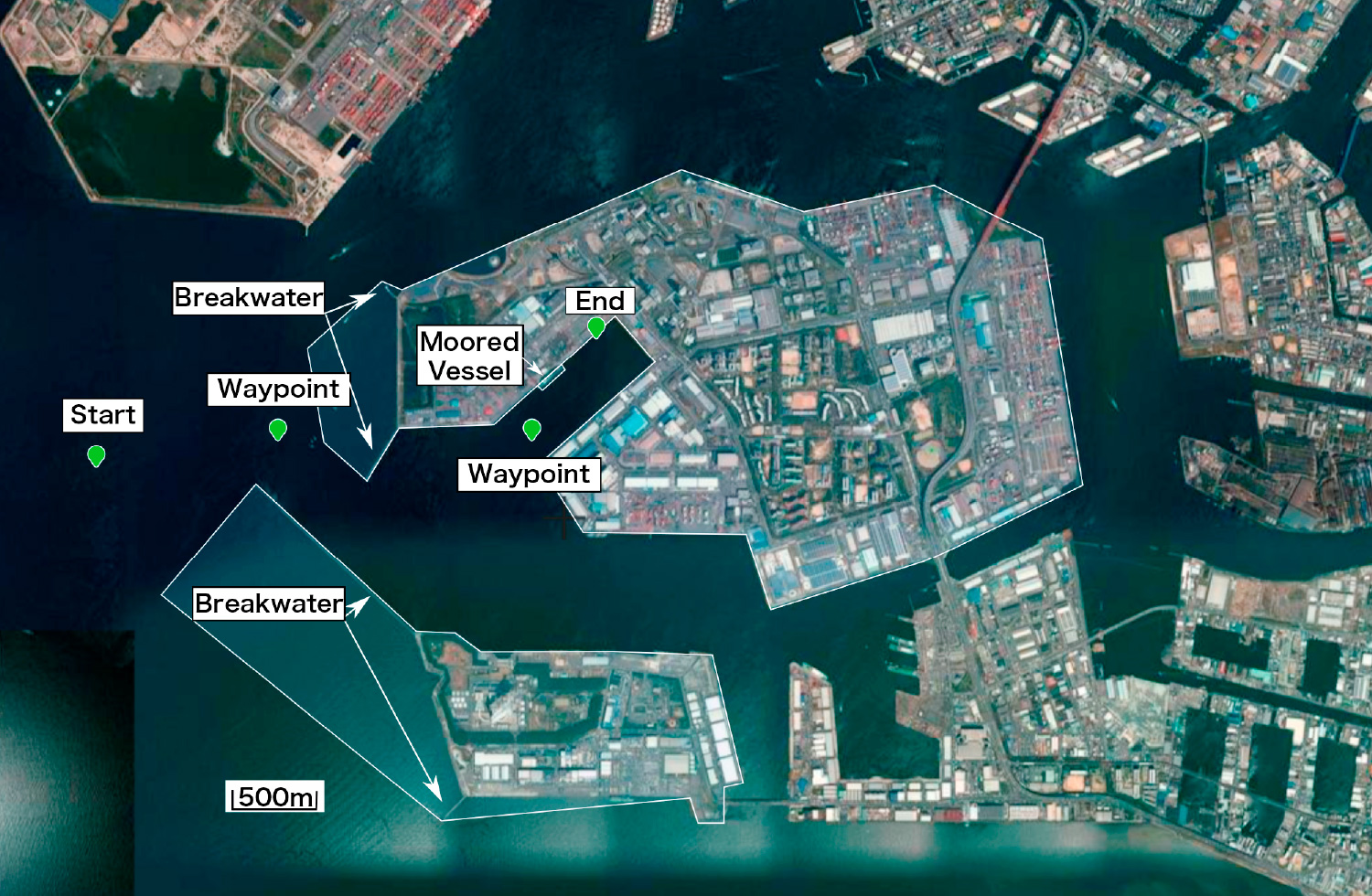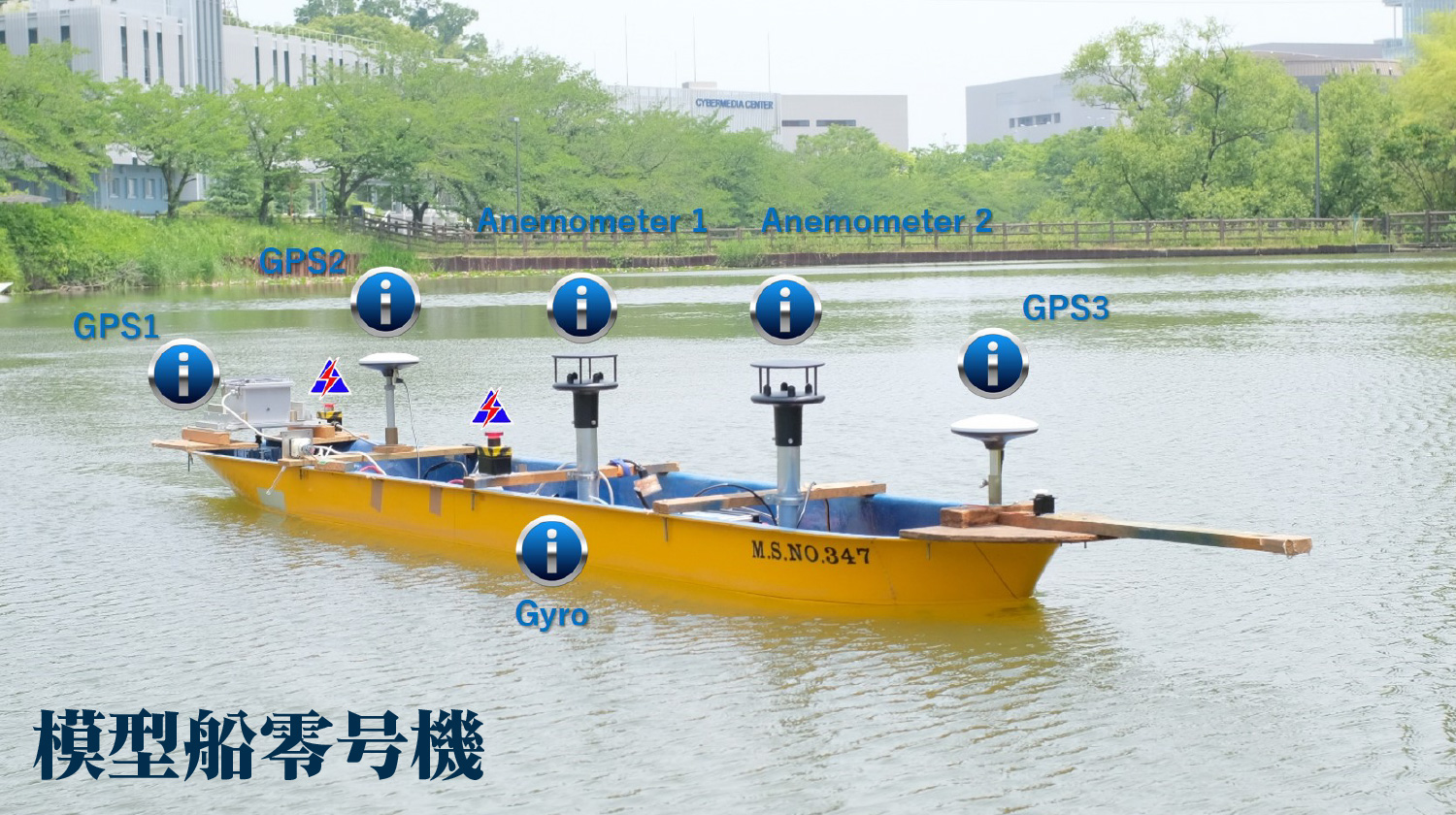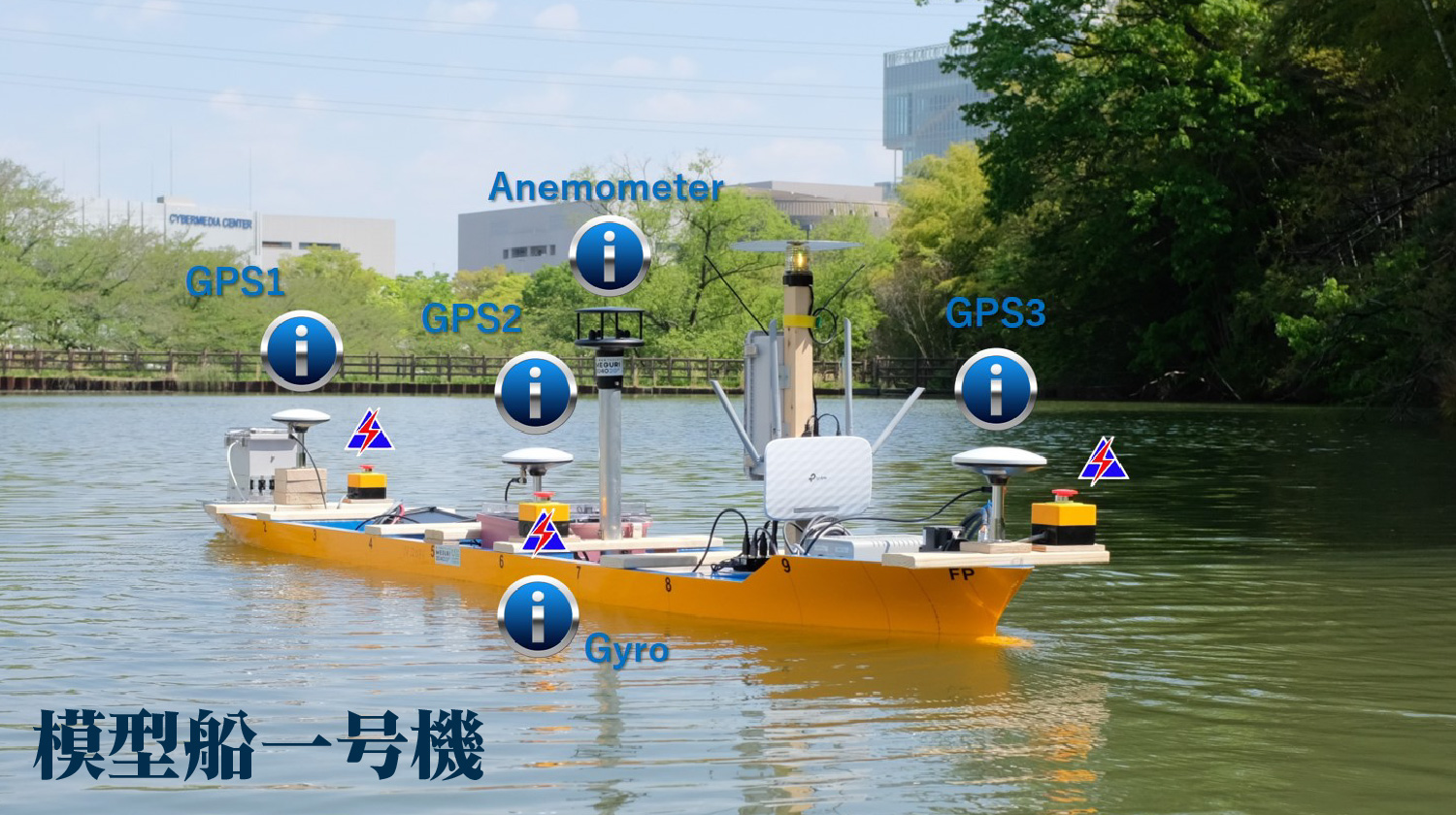
Autonomous Ship Operation and Digital Twin
Index
It is predicted that the supply and demand of seafarers will be tight worldwide due to the increase in sea transportation volume. Domestic shipping is also suffering from a shortage of seafarers, and the need for automated operations is increasing. On the other hand, it has been pointed out that about 80% of marine accidents are caused by human factors, and it is thought that automatic operation will enable safer and more secure ship operations.
In our laboratory, we are implementing various technical elements necessary for automatic operation from various aspects.
Development of high-precision motion simulation method using digital twin
Dynamic model estimation by Neural Network
The video below shows the result of dynamic modellng using Neural Network. You can see that the trajectory of the experiment can be reproduced very well.
Model inverse estimation by global optimization
The video below shows the result of back-estimating the coefficients of the equation of motion that have been used in the past, based on a powerful optimization method. You can see that the trajectory of the experiment can be reproduced very well.
Development of automatic sailoff and berthing system method by fusion of control theory and artificial intelligence
Offline control
The satellite photo below is the port of Osaka. The ferry actually performs sailoff and berthing at the pier as shown in the following video.
 created by SIS based on 1: 1,000,000 INTERNATIONAL MAP data and seamless photo data (Geospatial Information Authority of Japan) ( http://maps.gsi.go.jp/ )
created by SIS based on 1: 1,000,000 INTERNATIONAL MAP data and seamless photo data (Geospatial Information Authority of Japan) ( http://maps.gsi.go.jp/ )
The video below shows the result of optimizing the offline landing route by a powerful optimization method. It behaves in much the same way as an actual ship berths.
As above, this is the result of optimizing the offline departure route. Here, too, the same trajectory as the actual ship is obtained.
Online control by reinforcement learning etc.
There are various ways of thinking about online control, but we believe that it is most efficient to use the results of offline control. In the video below, the preset orbit is tracked and controlled by a neural network with a shallow layer.
Furthermore, in the following video, it is the result of tracking control by reinforcement learning.
Development of model ship control system and simulator
In this laboratory, model ships are used for verification of automatic berthing technology. Experiments are conducted every week (every day?) In the pond in front of the laboratory. There are currently two model ships for that purpose.


Both operate on almost the same system, and ROS (Robot Operating System) is used for middleware. Information from various sensors is processed by the Kalman filter and used for control.